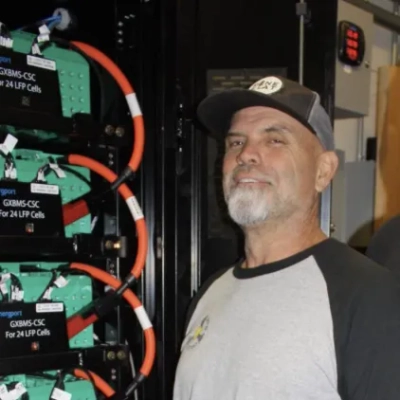How to Choose the Right Neighborhood as a First-Time Homebuyer
Choosing the perfect neighborhood as a first-time homebuyer can be a daunting task, but it’s crucial for long-term satisfaction and investment potential. This comprehensive guide offers valuable insights from real estate experts on key factors to consider, from analyzing neighborhood trajectories to evaluating energy infrastructure. By focusing on both practical considerations and lifestyle preferences, readers will gain the knowledge needed to make an informed decision on their ideal community.
- Analyze Neighborhood Trajectory for Future Value
- Consider Cash Flow Potential and Carrying Costs
- Prioritize Lifestyle Fit and Community Feel
- Evaluate Energy Infrastructure and Resilience
- Inspect Electrical Systems and Development Plans
- Assess Property Boundaries and Local Trades
- Investigate Thoroughly at Various Times
- Think Long-Term and Lifestyle-First When Choosing
- Focus on Sensory Experience of Neighborhood
- Balance Practicality with Lifestyle Preferences
- Explore Neighborhoods After Dark for Insights
Analyze Neighborhood Trajectory for Future Value
As a commercial broker who has analyzed hundreds of properties, I’d say the biggest mistake first-time buyers make is focusing only on the home itself rather than neighborhood trajectory. Look for areas with consistent rent growth and infrastructure improvements – these signal appreciation potential.
When I evaluate neighborhood potential, I track three key metrics: new business permits (economic vitality), school rating trends (not just current scores), and average days-on-market compared to surrounding areas. These data points will tell you more about future value than granite countertops ever will.
I recently helped a client buy in an “up-and-coming” area near a new distribution hub that our AI tools had flagged six months before mainstream reports. They paid 12% below similar neighborhoods and have already seen 8% appreciation. The neighborhood had mediocre schools but massive infrastructure investment.
The neighborhood you choose is ultimately an investment vehicle. Consider your exit strategy even if you plan to stay forever – life changes. I’d recommend spending an afternoon counting construction permits on telephone poles and new business openings rather than just checking crime stats online.
 Brett Sherman
Brett Sherman
Real Estate Broker, Signature Realty
Consider Cash Flow Potential and Carrying Costs
As a loan officer who has helped hundreds of first-time buyers secure financing, I’ve learned that cash flow potential matters even if you’re buying a primary residence. I always tell clients to research rental rates in neighborhoods they’re considering – not because they’ll rent immediately, but because strong rental demand signals economic stability and future resale value.
The biggest mistake I see is buyers falling in love with a house before understanding the true carrying costs of that specific area. Property taxes can vary dramatically even within the same school district. I’ve seen clients shocked by $800/month differences between adjacent neighborhoods that looked identical on paper.
One client last year was torn between two similar homes, but I helped them dig into the local lending patterns in each area. The neighborhood with consistent DSCR loan activity and investor interest had properties appreciating 12% faster over three years. That data helped them choose the area where their equity would grow more reliably.
Always check what types of loans are commonly used in your target neighborhood. Areas where investors use portfolio lending and alternative financing often indicate stronger fundamentals than places where only FHA loans are viable.
 Daniel Lopez
Daniel Lopez
Loan Officer, BrightBridge Realty Capital
Prioritize Lifestyle Fit and Community Feel
Absolutely, choosing the right neighborhood is as crucial as selecting the home itself. For first-time home buyers, my top piece of advice would be to prioritize understanding the lifestyle and community feel of the neighborhood over purely aesthetic or immediate financial considerations. When I was choosing a neighborhood, I found that factors such as proximity to work, school quality, safety, and the availability of amenities like parks and shopping centers were paramount. Additionally, considering the long-term growth potential of the area is vital. Will the neighborhood support your lifestyle as it evolves? Visiting at different times of the day and week can also offer insights into the area’s character and traffic patterns. Engaging with local residents to gather opinions can often reveal details that aren’t immediately visible. Remember, investing time into researching neighborhood dynamics can greatly enhance your overall satisfaction with the home you choose.
 Cesar Villaseñor
Cesar Villaseñor
Real Estate Investor, Click Cash Home Buyers
Evaluate Energy Infrastructure and Resilience
After 30 years in renewable energy across Northern California’s counties, I’ve seen how energy infrastructure can make or break a neighborhood’s long-term costs. The biggest factor I’d prioritize is understanding the local utility situation and energy resilience of an area.
When I evaluate neighborhoods in Sonoma, Napa, or Mendocino counties, I always check the frequency of power outages and whether the area has updated electrical grid infrastructure. Some neighborhoods here face 10-15 outage days annually during fire season, while others might see 2-3 days at most. This directly impacts your quality of life and potential solar investment returns.
I’d specifically recommend driving through your target neighborhood during peak summer afternoons and noting how many homes already have solar installations. High solar adoption rates usually indicate favorable utility policies, good sun exposure, and financially savvy neighbors who understand long-term energy costs.
The energy landscape changes fast – areas that seemed stable five years ago now face rolling blackouts, while neighborhoods with micro-grid capabilities maintain power during emergencies. Factor in potential solar installation costs and utility rate structures when calculating your true monthly housing costs, because your electricity bill could easily add $200-400 monthly in energy-intensive areas.
 Rody Jonas
Rody Jonas
Owner, Pure Power Solutions
Inspect Electrical Systems and Development Plans
As a Master Electrician who has worked in homes across the Denver metro area for over 15 years, I would say that electrical infrastructure is a critical factor that first-time buyers frequently overlook. I have seen countless homes in older neighborhoods like Washington Park with dangerous outdated panels that required immediate upgrades costing over $3,000.
Future development plans dramatically impact property value. When we worked in areas like RiNo before its transformation, clients who researched upcoming commercial developments saw their property values increase substantially compared to similar homes in stagnant areas.
Noise pollution varies dramatically between neighborhoods. During service calls, I have noticed that homes near highways or flight paths often have residents who regret their purchase decision. I specifically chose my neighborhood based on ambient noise levels after experiencing the stark difference between properties just blocks apart.
Emergency response time is worth investigating. Through our emergency electrical service work, I have witnessed how response times can vary by 5-10 minutes between adjacent neighborhoods. This difference becomes critical during medical emergencies or security concerns.
 Jeremy Jackson
Jeremy Jackson
Owner, JD Electrical Home Solutions
Assess Property Boundaries and Local Trades
As a fencing contractor who has worked across Melbourne neighborhoods for over 7 years, I’ve noticed that property boundaries can reveal everything about a neighborhood’s character. When assessing a new area, I look at fence condition, style diversity, and maintenance – these visual clues reveal community standards and neighbor relationships better than most real estate data.
Access to quality tradespeople is often overlooked but crucial. Some neighborhoods I work in have 3-4 month waitlists for good contractors, while others can get quality work started within weeks. Before buying, call local trades to check their availability in that area – it’s a hidden indicator of future renovation challenges.
Safety infrastructure is something I evaluate daily. When installing security fencing, I notice neighborhoods with well-lit streets, clear sight lines, and thoughtful boundary design have significantly fewer break-ins. One client in an apparently upscale area faced repeated trespassing until we addressed fundamental perimeter vulnerabilities that the whole street shared.
Natural boundary lines matter tremendously. Properties with established trees, natural drainage patterns, and sensible topography lead to fewer neighbor disputes and lower maintenance costs. We recently installed fencing for an entire street where poor drainage planning created costly water issues between properties – something impossible to spot during typical open house visits.
 Jake Bunston
Jake Bunston
Owner, MAKE Fencing
Investigate Thoroughly at Various Times
Don’t simply take a “Sunday drive” on a sunny afternoon around neighborhoods you’re interested in—also conduct a thorough investigation to ensure a neighborhood aligns with your preferences.
Perform a comprehensive visual assessment by visiting at various times of the day on multiple days, as a neighborhood that appears quiet during daylight hours may become lively at night. Additionally, drive around in different weather conditions, specifically to check for drainage issues on the roads during rainy weather, and to evaluate how quickly the roads are plowed in snowy conditions.
Furthermore, utilize social media groups to inquire about neighborhoods, as well as solicit opinions from coworkers, friends, and members of organizations you’re involved with.
The factors that were most important to my husband and me as first-time homebuyers were a quiet and safe environment. We recognized that these factors were also advantageous in lowering costs, including our home insurance premium, as rates are reduced for living not only in a low-crime area but also within five miles of a fire station.
Our home is located exactly one mile from a fire station, and we learned from coworkers as well as family members in the area that the neighborhood we are in is indeed quiet and safe.
 Michelle Robbins
Michelle Robbins
Licensed Insurance Agent, USInsuranceAgents.com
Think Long-Term and Lifestyle-First When Choosing
One piece of advice I always give first-time home buyers when choosing the right neighborhood is this: think long-term and lifestyle-first. Don’t just fall in love with the house—make sure the area supports how you actually want to live day to day. Spend time walking the neighborhood at different times of day, talk to people who live there, and pay attention to the things you can’t change—like traffic patterns, noise, safety, and proximity to things that matter to you.
When I was making a personal decision, the most important factors were convenience, future resale value, and overall community vibe. I looked for areas with rising demand, good schools (even if I didn’t have kids at the time), strong city services, and a feeling that people took pride in their homes. It’s easy to get distracted by finishes and square footage, but the neighborhood sets the tone for your whole life—not just your mortgage.
 Parker McInnis
Parker McInnis
Owner, Speedy Sale Home Buyers
Focus on Sensory Experience of Neighborhood
The most underrated factor in choosing a neighborhood is sensory experience—the daily sights, sounds, and subtle details that shape how you feel in a space. When I bought my home, I focused on practicality—school ratings, commute times, property values—but I underestimated how much environmental atmosphere affects long-term happiness. A neighborhood might check every logical box, but if it feels sterile, noisy, or disconnected, it wears on you over time. Now, I advise first-time buyers to spend time in the area without an agenda—sit in a local café, walk through side streets, listen to how the neighborhood breathes. Notice small things: how people interact, whether businesses feel personal or corporate, if the air carries warmth or detachment. A home isn’t just where you live—it’s where you experience life, and the emotional pulse of a neighborhood often matters more than its checklist appeal. The right neighborhood isn’t just livable; it’s a place that feels like yours.
 Seymen Usta
Seymen Usta
Interior Designer, Modern Chandelier
Balance Practicality with Lifestyle Preferences
There is really no single perfect neighborhood because it’s all about finding the right fit for you, your lifestyle, needs, priorities, and household. The way I see it, the right neighborhood would have to be one that would make it possible for you to thrive and feel at home. This means that proximity to certain amenities such as schools, parks, malls, work, and public transportation are some of the essential factors that must be considered, as these factors could either make or mar your quality of life and experiences. For instance, if a first-time home buyer chooses to buy a home in a neighborhood that is far from their workplace, lacks good schools, has no public transportation, and is not exactly close to any grocery store or other essential services, simply because this neighborhood is their dream neighborhood to own a home in terms of aesthetics or lifestyle.
The fact is that they may be sacrificing convenience and practicality for style, and this could end up costing them more in the long run, both in the form of increased transportation costs and commuting time, and also in the form of difficulty accessing essential services. This is why one piece of advice I would give to first-time home buyers about choosing the right neighborhood is that they avoid the mistake of prioritizing aesthetics or prestige over practicality and functionality. The truth is that this is one of the very common mistakes that first-time home buyers make when choosing a neighborhood to buy a home in, and it’s a mistake that has long-term consequences on their quality of life and finances.
In my experience, I have found that it is important to consider factors like proximity to work, school, grocery stores, etc., because the truth is that it can be challenging to have to get into the car and drive a long distance every time you need to get groceries or drop off the kids at school. It can also be exhausting and expensive to pay for fuel, car maintenance, and parking for multiple cars because the fact is that, with your remote living situation, and how far you and your household are from essential amenities, you would most likely need multiple cars, and the costs can add up quickly and become unsustainable in terms of finances and energy.
 Nathan Richardson
Nathan Richardson
Founder, Business Owner and Leader, CashForHome
Explore Neighborhoods After Dark for Insights
My best advice for first-time home buyers? Don’t judge a neighborhood just by daylight.
Take the time to drive or walk through your top choice after dark.
Nighttime can reveal a side of the neighborhood you would never notice otherwise.
Sometimes you’ll find that street lighting is dim or missing, making some areas feel less safe or inviting. You might notice the type and amount of foot traffic—some neighborhoods come alive with people out socializing, while others turn quiet or feel empty.
Pay attention to any nearby businesses.
Places like bars or late-night restaurants can bring extra cars, noise, or people passing through long after most residents have gone to bed.
Also, watch for any security concerns, such as groups hanging out in certain areas or places that feel less comfortable when the sun goes down.
A simple visit in the evening gives you a much more honest sense of the neighborhood and helps you choose a place that will truly feel right once you move in.
 Patrick Schultz
Patrick Schultz
Co-Founder, Bright Bid Homes
